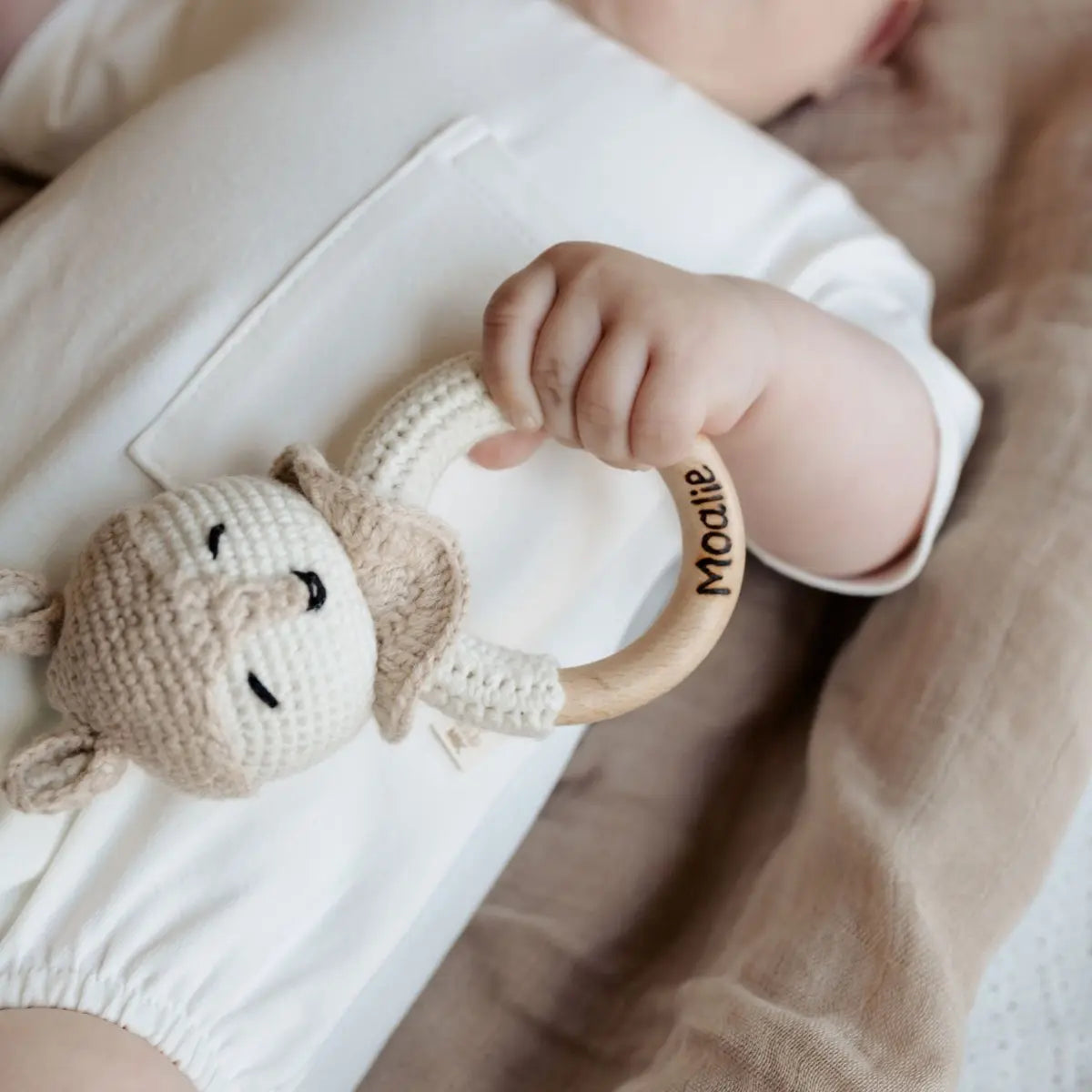
Everything you need to know about baby teethers
Everything you need to know about baby teethers
Why a teething ring is indispensable for your baby
Teething rings are an essential tool for babies during the teething phase. They not only help relieve pain and discomfort, but also support motor and sensory development. Chewing on a teething ring relieves pressure on the gums, which has a soothing effect. It also helps strengthen the oral muscles, which is important for learning to speak and eat.
Why a teething ring for your baby?
Teething can be very uncomfortable for babies. A teething ring provides relief by relieving pressure on the gums and chewing stimulates the development of the oral muscles. In addition, a teething ring is often a source of comfort for your baby during this difficult phase.

Which teething ring is best for your baby?
Teething rings are available in a variety of materials, including:
-
Silicone: Soft, flexible and often dishwasher safe.
-
Wood: Natural and durable, but more difficult to clean and sensitive to moisture.
-
Rubber: Elastic and sturdy, but make sure it is BPA free.
When choosing a teething ring, it is important to pay attention to safety and comfort. Always choose a teething ring that is free of harmful substances such as BPA, phthalates and PVC. Also make sure that the teething ring does not contain any loose parts and is sturdy enough to last a long time.
When can you use a teething ring?
Many parents wonder: when can my baby use a teether? Generally, babies start chewing on objects between 3 and 6 months of age, as their first teeth emerge. This is a good time to introduce a teether. Pay close attention to your baby’s signals, such as increased salivation, bringing hands or toys to their mouth, and mild irritability.
How does a teething ring help with sensory development?
Many teethers have different textures and materials that encourage babies to feel and explore. This helps with their sensory development. Some teethers also have built-in rattles or squeaks that help stimulate your baby's auditory skills.
How do you clean a teething ring?
A hygienic teether is essential for your baby to chew safely. Here are some methods to properly clean a teether:
1. Wash with soap and water
Use a mild, baby-friendly soap and warm water to thoroughly clean the teether. Rinse well to remove soap residue.
2. Dishwasher
If the teether is dishwasher safe, you can place it on the top rack for a thorough cleaning.
3. Sterilize
Boil the teether in water for a few minutes to kill bacteria. Make sure the teether is heat resistant.
4. Natural cleaning solution
Mix one part vinegar with ten parts water for a natural cleaning solution. Soak the teether in this for a few moments and then rinse thoroughly.
From when can a baby use a teething ring?
Most babies start using a teething ring around 3 months , when the first signs of teething become visible. However, some babies don’t need one until around 6 months. It’s important to watch your baby’s behavior and determine when he or she is ready.
Which teething ring is right for your baby?
Depending on your baby's needs, you can choose from different teething rings:
-
Silicone teething rings : Soft, flexible and easy to clean.
-
Wooden teething rings : Natural and sustainable, ideal for babies who need more pressure on their gums.
-
Textured Teething Rings : Different textures help massage and soothe irritated gums.
Conclusion
A teether is a valuable addition for teething babies. By choosing a safe and quality teether, you can relieve pain and stimulate your baby's sensory development. Regular cleaning and checking for wear and tear ensures that the teether remains safe to use. With the right teether, the teething phase becomes a lot more pleasant for both baby and parents!
Share
